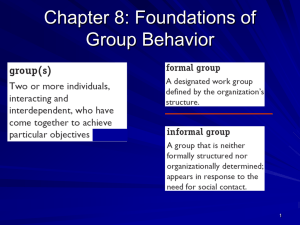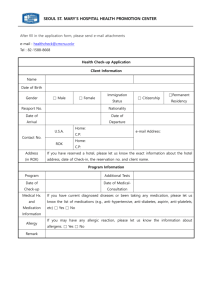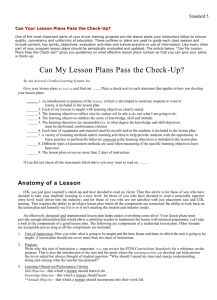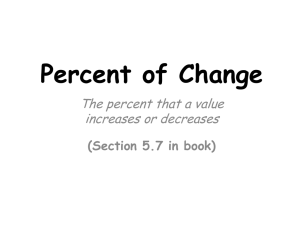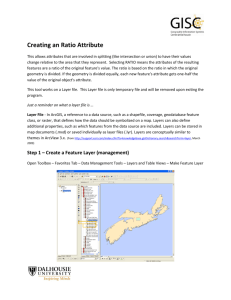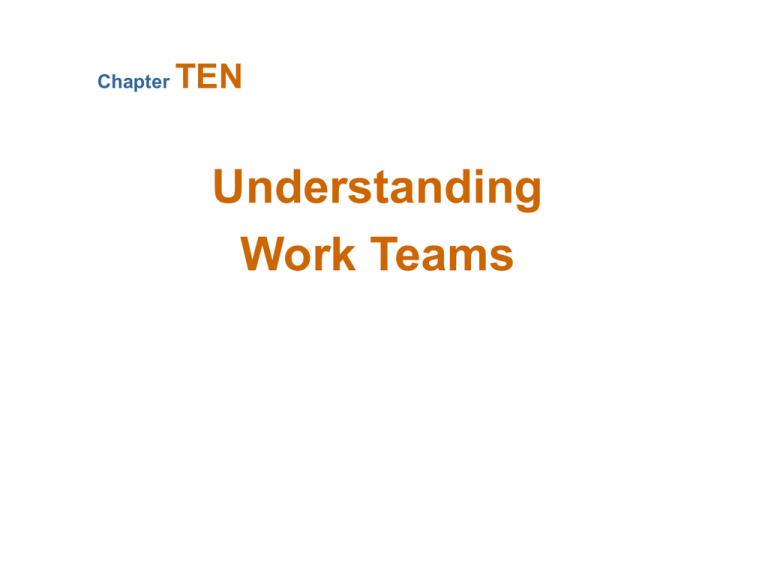
Chapter
TEN
Understanding
Work Teams
Why Have Teams Become So Popular?
Teams typically outperform individuals.
Teams use employee talents better.
Teams are more flexible and responsive to changes
in the environment.
Teams facilitate employee involvement.
Teams are an effective way to democratize an
organization and increase motivation.
Team Versus Group: What’s the Difference?
Work Group
A group that interacts primarily to
share information and to make
decisions to help each group
member perform within his or her
area of responsibility
Work Team
A group whose individual efforts
result in a performance that is
greater than the sum of the
individual inputs
Comparing Work Groups and Work Teams
E X H I B I T 10–1
Types of Teams
Problem-solving Teams
Groups of 5 to 12 employees from the
same department who meet for a few
hours each week to discuss ways of
improving quality, efficiency, and the work
environment
Self-Managed Work Teams
Groups of 10 to 15 people who take on
the responsibilities of their former
supervisors
Types of Teams (cont’d)
Cross-Functional Teams
Employees from about the same hierarchical level, but
from different work areas, who come together to
accomplish a task
• Task forces
• Committees
Types of Teams (cont’d)
Virtual Teams
Teams that use computer
technology to tie together
physically dispersed members
in order to achieve a common
goal
Characteristics of Virtual Teams
1. The absence of paraverbal and nonverbal cues
2. A limited social context
3. The ability to overcome time and space constraints
A Team-Effectiveness
Model
E X H I B I T 10–3
Creating Effective Teams
Creating Effective Teams (cont’d)
Key Roles of Teams
E X H I B I T 10–4
Creating Effective Teams (cont’d)
Creating Effective Teams (cont’d)
Effects of Group Processes
=
+
MINUS
Goal: Maximize Process Gains While
Minimizing Process Losses!
E X H I B I T 10–5
Creating Effective Teams: Diversity
Group Demography
The degree to which members of a group share a
common demographic attribute, such as age, sex, race,
educational level, or length of service in the organization,
and the impact of this attribute on turnover
Cohorts
Individuals who, as part of
a group, hold a common
attribute
Turning Individuals into Team Players
The Challenges
– Overcoming individual resistance to team membership
– Countering the influence of individualistic cultures
– Introducing teams in an organization that has
historically valued individual achievement
Shaping Team Players
– Selecting employees who can fulfill their team roles
– Training employees to become team players
– Reworking the reward system to encourage
cooperative efforts while continuing to recognize
individual contributions
Teams and Quality Management
Team Effectiveness and Quality Management
Requires that Teams:
1. Are small enough to be efficient and effective.
2. Are properly trained in required skills.
3. Are allocated enough time to work on problems.
4. Are given authority to resolve problems and take
corrective action.
5. Have a designated “champion” to call on when
needed.
Beware: Teams Aren’t Always the Answer
Three tests to see if a team fits the situation:
– Is the work complex and is there a need for different
perspectives?
– Does the work create a common purpose or set of
goals for the group that is larger than the aggregate of
the goals for individuals?
– Are members of the group involved in interdependent
tasks?
Chapter Check-up: Teams
What kinds of things have you
experienced in a team setting that could
be considered as process loss? Choose
two and write them down.
Possibilities include: Too much socializing,
coordinating work flow, lag time in responses
to emails, personality conflicts, attendance and
timeliness problems, etc.
Chapter Check-up: Teams
If you were asked to choose people
from your class right now to make up
a team for a class project, list five
individuals you would choose.
Now that you have your list, consider what the
composition of your team would look like. How much
diversity would there be? Given what we learned in
this chapter, what would the pros and cons of your
composition be?
Chapter Check-up: Teams
Is conflict in a team good or bad? Discuss.
Conflict can be both good and bad. Task conflict
is beneficial for a team because it helps protect
against groupthink. Relationship conflict is bad
for a team’s morale.
What, specifically, can you do to create task
conflict in a group? Think about the reality of
trying to “stir the pot” . . . and write down a
phrase you could say (e.g., you would feel
comfortable saying to your peers) to create task
conflict.

